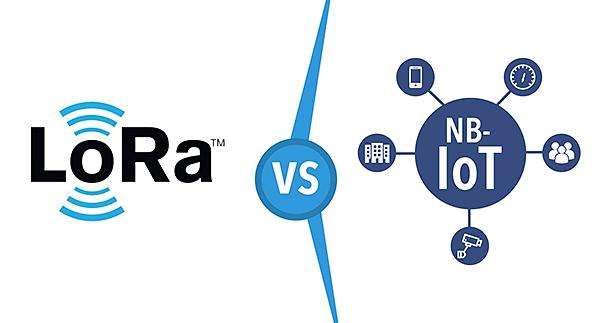Today, the Internet of Things (IoT) industry has entered a phase of rapid large-scale development, with more and more companies in vertical industries engaging in IoT construction. However, there is a divergence in choices between low-rate IoT technologies NB-IoT and LoRa. It seems that LoRa will stand alongside NB-IoT in China, but will that really be the case? In my view, NB-IoT will surely win this battle, and LoRa has no chance. We can compare and analyze from multiple dimensions such as chips, networks, spectrum technology, evolution, and applications.

Chips:
LoRa chips are monopolized by one company, while NB-IoT chips are open
Chips are the “seeds” of the IoT industry, determining what the entire industry will “grow” into. In terms of chip research and supply, there is only one manufacturer of LoRa chips, Semtech, a U.S. company, which constitutes a monopoly. This is a bad omen for the development of the entire industry.
A while ago, a Chinese telecommunications equipment company was banned from selling chips by the U.S., which caused normal operations to stagnate, resulting in huge costs. The painful lesson from this incident is still fresh in our minds. Why should we still promote a development path that can be easily choked off by others?
On the other hand, NB-IoT is a standard protocol defined by 3GPP, and mainstream global chip manufacturers can provide commercial NB-IoT chips, such as Qualcomm, MKT, RDA, Samsung, ARM, Huawei, etc., all of which can launch products that comply with global open protocols. Moreover, as I understand, Huawei, a major contributor to the NB-IoT chip patents, plans to not charge patent fees for its HiSilicon NB-IoT chips. This is a huge positive news for the scale development of the IoT industry.
In terms of price, as the shipment volume of NB-IoT chips increases, the price of NB-IoT modules has gradually approached that of GSM modules. Recently, China Unicom opened bidding for 3 million NB-IoT modules, and the price of NB modules has dropped to 23 yuan/pcs, similar to that of LoRa modules, with only a less than 5 yuan difference compared to GSM. I believe that as the number of NB-IoT connections continues to increase, the price of NB-IoT modules will further decrease.
Network:
Operators support NB-IoT networks, while self-built LoRa networks are cost-ineffective
Looking at the specific network construction, the LoRa camp claims to have more than 50 commercial networks, but lacks the participation of mainstream operators. Early supporters of LoRa like Orange and Belgium’s Proximus have also begun to transition to NB-IoT. LoRa networks require entirely new equipment to be built, leading to high initial investments, making it difficult for any manufacturer to achieve continuous coverage in a short time.
It is worth mentioning the dramatic experience of South Korean operator SKT in IoT development. SKT, in pursuit of reducing network construction costs, built tens of thousands of LoRa base stations in Seoul, South Korea, between 2016 and 2017, but the coverage was poor. Terminal devices could only receive signals on the street and had almost no signal indoors. This poor result led SKT to be unable to compete in the IoT field with the other two South Korean operators, KT and LG U+, who deployed NB-IoT networks.
NB-IoT, on the other hand, is a standard technology supported by mainstream global operators. 56 operators, including Vodafone, Deutsche Telekom, and SoftBank Japan, have already deployed commercial NB-IoT networks. In the United States, T-Mobile has announced the commercialization of NB-IoT, while AT&T and Verizon are also actively piloting NB-IoT commercialization. In China, the three major operators have deployed nearly 1 million NB-IoT base stations. NB-IoT can rely on existing operator equipment for software upgrades, requiring less investment, protecting existing assets, and allowing for rapid network deployment.
Looking at various vertical industry customers, the cost-effectiveness of vertical industry customers building their own LoRa networks is not as high as imagined. LoRa requires industry customers to either build the network themselves or entrust a third party, which means that LoRa networks require industry customers to maintain them. However, industry customers are generally not experts in communications, so they will mainly rely on third parties for maintenance, leading to high maintenance costs. At the same time, industry customers do not have a good grasp of the direction and pace of technology updates, unlike operator networks, which are more professional and have more stable network quality. Therefore, from this perspective, NB-IoT networks are better for industry customers than LoRa.
Spectrum Technology:
LoRa operates in unlicensed bands, which are unstable
LoRa operates in unlicensed bands, somewhat similar to Wi-Fi, where anyone can use it. The interference in the bands is uncontrollable, and such interference can lead to a decline in communication quality. The Chinese government has also been seeking public opinion on managing unlicensed spectrum, aiming to effectively regulate unlicensed spectrum in the country, such as limiting the continuous transmission time of transmitters and prohibiting network formation. Although the consultation draft has not been officially released, it poses potential uncertainties regarding regulatory policies for LoRa operating in unlicensed spectrum.
In addition to spectrum issues, the communication quality of LoRa technology is also difficult to guarantee. LoRa is based on the Aloha mechanism, similar to Wi-Fi, where channel contention occurs. For example, if a device tries to send a signal and detects a collision with another signal, it must wait some time before trying again. This collision mechanism can lead to a large number of ineffective collisions, resulting in low sending and receiving efficiency.
Conversely, NB-IoT operates on licensed spectrum, where all spectrum usage is professionally planned and legally protected, making interference controllable. NB-IoT is based on scheduled technology, where the base station schedules which user transmits when, resulting in high resource utilization efficiency and fewer collisions. Thus, scheduled systems can further enhance communication quality.
Evolution:
LoRa is difficult to evolve towards 5G, while NB-IoT will evolve to 5G
When discussing the future evolution of technology, we can find that NB-IoT is an IoT technology oriented towards 5G, which will coexist with NR mMTC for a long time and evolve towards 5G in the future. Specifically, NB-IoT is continuously evolving; 3GPP Release 13 is the first version, and subsequent Releases 14 and 15 will continue to enhance it, ultimately targeting 5G.
In contrast, LoRa is a proprietary protocol of a single company, making it difficult to achieve long-term technological evolution. It is essential to understand that if an innovative technology cannot continue to evolve, it has no future. Enterprises place great importance on protecting network investment costs and maximizing the use of existing resources.
Moreover, facing the massive market growth opportunity of 5G, operators will not miss it. They will carefully calculate the direction of every investment before 5G enters large-scale development—not only beneficial for the present but also for the future.
Applications:
LoRa has not seen million-connection projects, while NB-IoT applications are entering an explosive phase
In commercial practice, NB-IoT has nearly reached million-level applications, while LoRa has not seen any significant projects to date. In smart city applications, for example, Hangzhou’s NB-IoT smoke detectors have signed contracts for 1 million NB-IoT modules; a certain province’s NB-IoT electric vehicle monitoring has begun large-scale pilot, currently deploying 150,000 NB-IoT devices, with a target of 3 million by 20XX; and Shenzhen Gas has also announced plans to deploy 1.6 million NB-IoT smart gas meters. In smart factories, in May 2018, Ericsson’s Nanjing factory successfully deployed its 1,000th NB-IoT terminal application, marking significant progress in the intelligent transformation of industrial manufacturing using NB-IoT.
Those who do not consider the overall situation are not enough to strategize in one domain. Therefore, from the above aspects, LoRa has no chance, and NB-IoT will achieve great victory.

Huang Haifeng:
A senior technology media person, focusing on the integrated development of communications, terminals, the Internet, and IT.
The content focuses on the field, practical insights, observations, and revelations. Understanding things to gain knowledge.
This account covers Toutiao, Baijia, Sohu, Phoenix, Sina, NetEase, Tencent News, Yidian, and Sina Weibo.
Personal WeChat ID: 174455367
